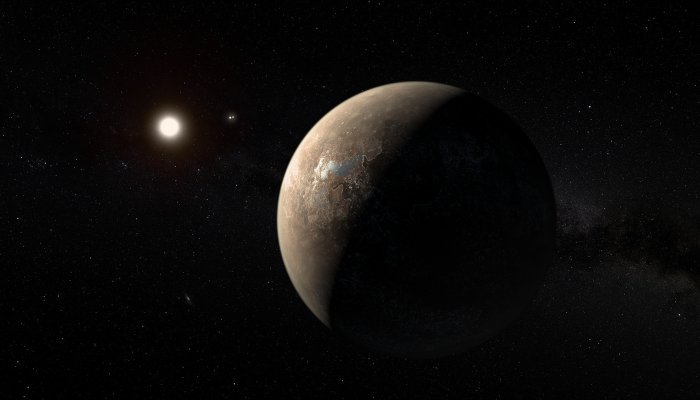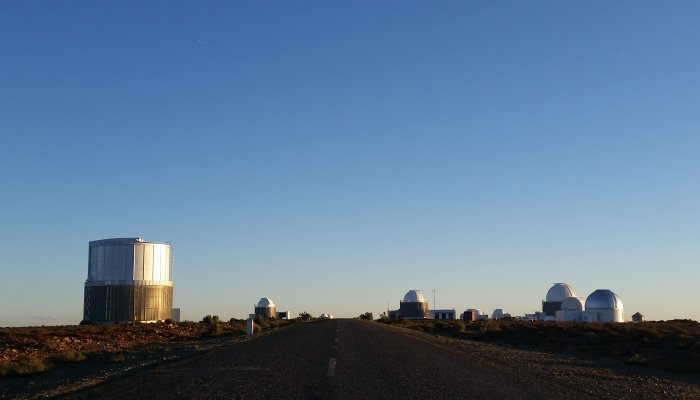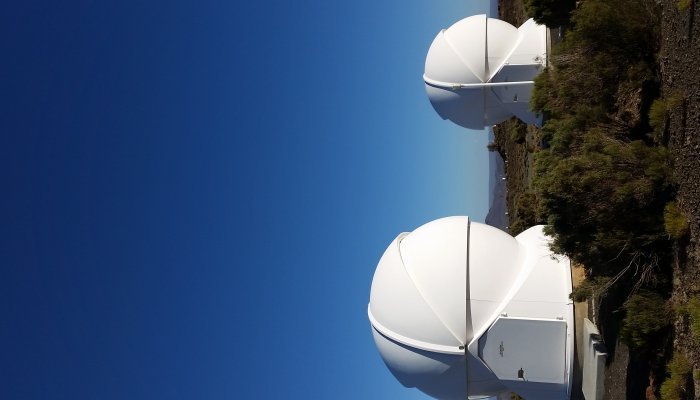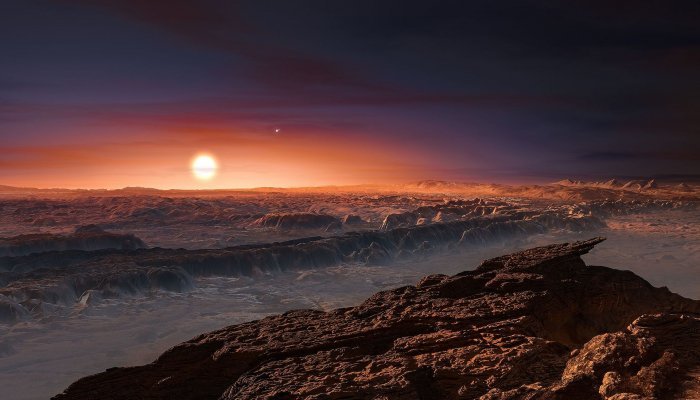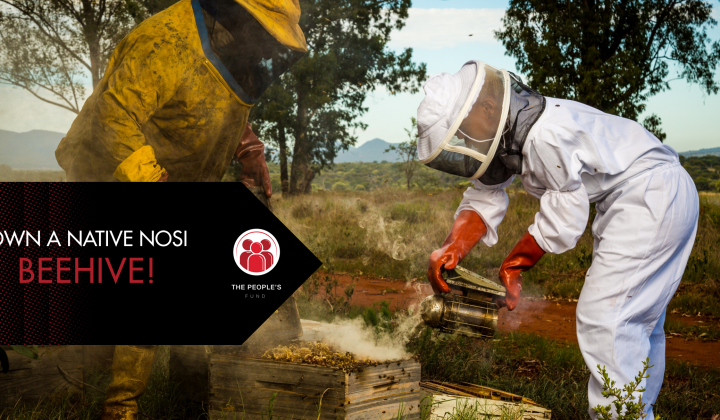Sutherland — a small Karoo town known for its astronomy and being alternatively the coldest and hottest place on the evening weather report — is a hot bed of exoplanet hunting.
On top of a hill, about 14km away from the dusty town with its one main road and glut of B&Bs for star-gazers, is the South African Astronomical Observatory’s Sutherland site. Since the 1970s, the observatory has had telescopes on the site —they have burgeoned to more than 20, and a number of these telescopes are hunting for exoplanets.
Three decades ago, we thought that the planets in our solar system were all the planets that the universe had to offer. We were very, very wrong.
The first exoplanet — a planet not in our solar system, but orbiting another star — was detected and confirmed in 1992. The word “planet” is still technically reserved for those orbiting the Sun, while all the others are “exoplanets”.
As of the first of this month, there are now almost 4,700 candidate exoplanets, of which 2,330 are confirmed. That’s about an exoplanet for every kilometre of a return journey between Cape Town and Johannesburg.
Hunting exoplanets
More than 2,000 of those were discovered by the intrepid Kepler spacecraft, which was launched by the United States’ National Aeronautics and Space Administration in 2009. The spacecraft, with a price tag of about $550-million, went out of commission in 2013, but not before it had identified about 3,600 exoplanet candidates.
“When I was in high school,” says SAAO astronomer Rudi Kuhn, “the only known planets were the nine in our solar system.”
Kuhn, for his PhD, was involved in the construction of a small telescope to “hunt for transiting exoplanets”, the KELT telescope. “It finds possible exoplanets, and then we try to verify those exoplanets with larger telescopes,” he says.
The KELT — which stands for Kilodegree Extremely Little Telescope — comprises two telescopes: KELT-North in the United States and KELT-South in Sutherland. It really is very little: it has a telephoto lens with an aperture (opening to capture light) of about 4cm, which is about the length of your pinkie finger. It effectively takes photos of the large portions of sky.
David Buckley, who is also an astronomer at SAAO, says: “It’s used to look for the slight dip in the brightness of a star due to the planet going around in front of it.” These dips are called transits and lots of small telescopes around the globe are using this technique to find exoplanets.
But sometimes exoplanets can take years to go around their star, which makes the chance of an astronomer looking at the correct moment very slim. “You increase your chances statistically by surveying thousands or millions of stars in one shot, and then hopefully through statistics, you’ll find planet transits,” Buckley notes.
That telescope has already detected two new exoplanets, which another handful waiting to be verified.
On a shoestring
Sutherland is “one of the few places in the southern Hemisphere where you can do exoplanet research”, Kuhn says. “Although we’re competing with people with bigger budgets, we can do the same things on a smaller budget.” This also forces the country’s planet hunters to “push the boundaries of [what is possible] with the technology”.
In 2012, SAAO astronomer Dr John Menzies was part of an international team which found that planets are the rule, rather the exception, in the Milky Way. SAAO’s contribution to the research — which included more than 40 collaborators — was made on a 1m optical telescope. For comparison: the feather in the Sutherland site’s cap, the Southern African Large Telescope (SALT), is a 10m telescope, housed in a three-storey building. The 1m telescope is very modest in comparison.
“Wherever you look, you’re likely to see a planet,” Menzies said at the time.
They used a technique called microlensing: when an exoplanet moves in front of a background star, it causes the brightness of the star to dim very, very slightly. After careful observation, astronomers can identify whether that dimming was caused by a planet, or another object. This is different to the transiting technique, which is when an exoplanet passes in front of its own star.
The Sutherland site’s pride and joy, SALT, also has exoplanet hunting capabilities. It has a high resolution spectrograph, operational since 2014, which can observe planets by the motions of their parent stars.
Another telescope on the Sutherland site forms part of the Korean Microlensing Telescope Network, which is a partnership between South African and South Korean astronomers. This is a dedicated planet-hunting telescope, with others in Chile and Australia forming a southern network.
With the Polish telescopes Solaris-1 and -2, which are both completely robotic, Polish scientists are looking a phenomena that were once thought impossible. The Polish initiative is observing exoplanets around binary stars.
“Astronomers didn’t think a few decades ago, or even more recently, that you could get a stable orbit of a planet around binary stars, but there are now many examples,” Buckley says.
These systems comprise two stars in orbit around each other. Scientists monitor when these stars, from our perspective on Earth, eclipse each other. If there are no exoplanets in the system, the stars eclipse like clockwork, but if there’s an exoplanet, it changes the eclipse times ever so slightly.
Astronomers can detect these small changes over time and then infer the presence of exoplanets.
But why?
Asked why planet-hunting was necessary, Menzies said: "When we thought it was only the solar system, we had one example [of how planets and solar systems are formed]. We could say: 'Here's an idea of how it started', and no one could say whether it was a good idea.
"Now that we have more planetary systems, we can develop a theory of how planets are formed, where everything came from, and how it got there."
But while planet hunting does offer an exciting new field of astronomy — swashbuckling with a telescope — the real bounty is habitable exoplanets, and these are much harder to find.
While it is likely in an infinite universe that Earth is not unique, it is not easy to find its twin. Exoplanets are just planets, not necessarily like Earth. Our blue and green globe has a cushioning atmosphere of nitrogen, with a soupçon of oxygen so we can breathe, and a magnetic core creating an invisible field that protects us from unrelenting cosmic radiation. It is situated in an area called the "Goldilocks zone", the perfect distance from the sun, so that it is neither too hot nor too cold and can have liquid water. If the Earth was closer to the sun, water would evaporate; if it was further away, water would freeze. We have carbon-based life on Earth because we have water. This is why planetary scientists — and most people who heard — got very excited last year when streaks of liquid water were found on Mars.
This “Goldilocks zone” makes habitable planets different to find because it’s quite close to its parent star, and thus difficult to see.
So far, we only know of about ten potentially habitable planets, with some teetering on the outer envelope of conditions that could support life.
The most exciting discovery came last month (August), when astronomers at Queen Mary University in London have announced the discovery of Proxima Centauri b, a planet orbiting close to a star 4.22 light years away.
Proxima Centauri is the closest star to our solar system, and was discovered in 1915 by the director of the Union Observatory in South Africa, Robert Innes.
Lead scientist in the Proxima Centauri b search, Guillem Anglada-Escudé, said at the announcement: “Many exoplanets have been found and many more will be found, but searching for the closest potential Earth-analogue and succeeding has been the experience of a lifetime for all of us… The search for life on Proxima Centauri b comes next."
Are there actually nine planets in our solar system
While we are looking out into the wider universe to discover exoplanets, there is also more planetary exploration to be done closer to home. Earlier this year, astronomers claimed that they had discovered the elusive ninth planet in our solar system.
“This would be a real ninth planet,” Mike Brown, Caltech professor of planetary astronomy, said at the time in an article on Caltech’s website. Brown is the author of the book How I Killed Pluto and Why It Had It Coming. “There have only been two true planets discovered since ancient times [Uranus was first observed in 1781 and Neptune in 1846], and this would be a third. It’s a pretty substantial chunk of our solar system that’s still out there to be found.”
“Planet Nine”, as it is imaginatively being called, has been “discovered” through mathematical modelling. Pluto, everyone’s favourite planet that is not actually a planet, lost its ninth planet status in 2006, because it was decided that it was too small and was a dwarf planet.
Brown and Konstantin Batygin, a Caltech assistant professor of planetary science, noted that objects in the outer reaches of our solar system, which appeared to be moving in a co-ordinated fashion, attracted by a giant celestial object.
They estimate that it is about 10 times the mass of Earth, with a very elongated orbit that sends it into the outer reaches of our solar system.
“Although we were initially quite sceptical that this planet could exist, as we continued to investigate its orbit and what it would mean for the outer solar system, we became increasingly convinced it is out there. For the first time in over 150 years, there is solid evidence that the solar system’s planetary census is incomplete,” Batygin said.
But it still has not been observed. Asked why Planet Nine hadn’t been seen, SAAO planetary astronomer Amanda Sickafoose said: “It doesn’t get closer than roughly 250 [astronomical units].”
One astronomical unit is the distance between the sun and the Earth, and the closest Planet Nine comes to us is 250 times that. “It spends the majority of its more than 10 000-year orbit much farther away from us,” she said. “Currently, the most distant solar system object that we have imaged optically is roughly 100 astronomical units away.”
This means there may be even more planets out there.


